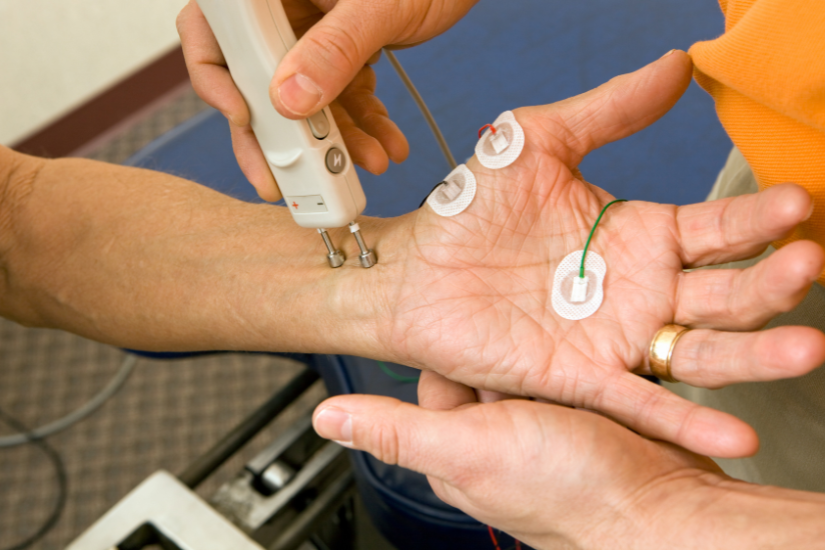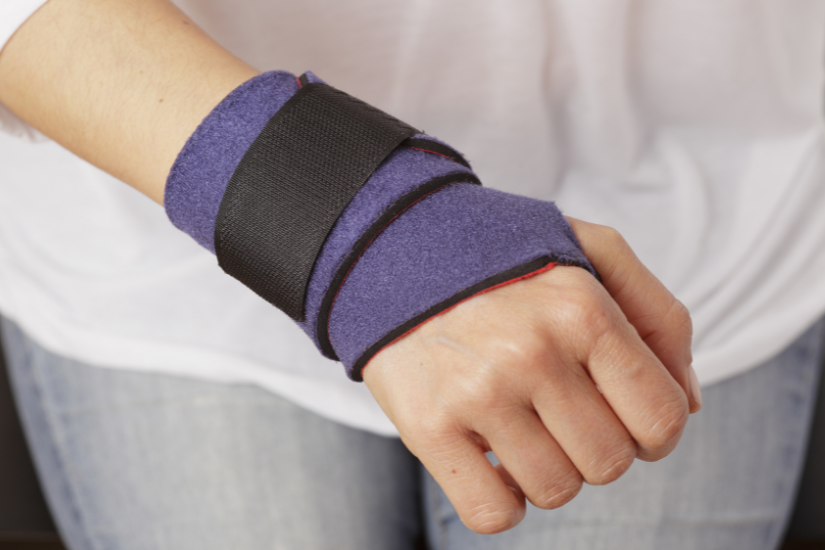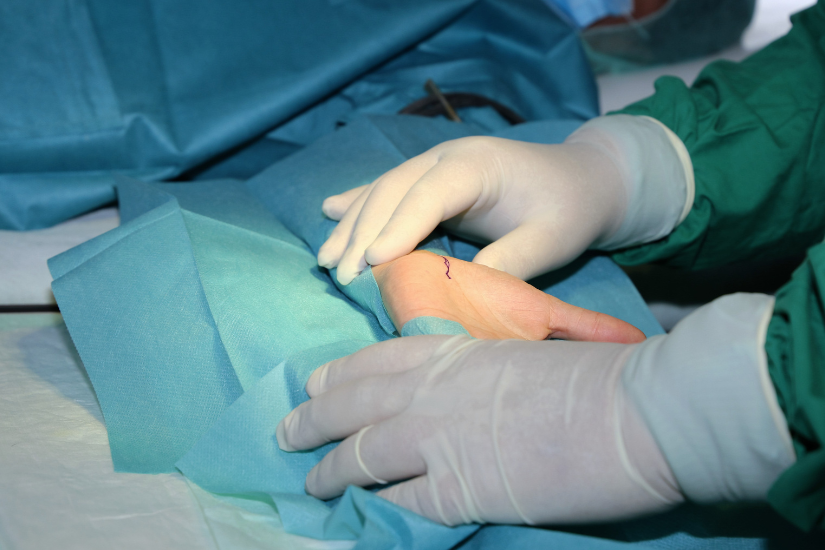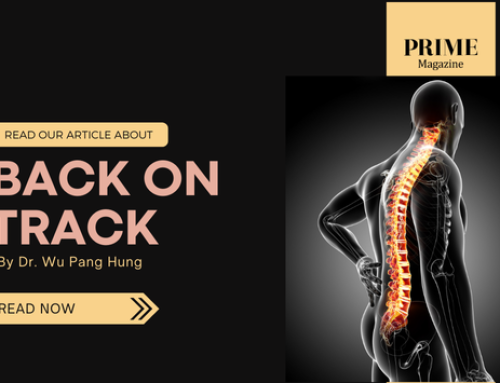Diagnosing and Treating Carpal Tunnel Syndrome (CTS)

Carpal tunnel syndrome (CTS) is one of the most common and frequently diagnosed repetitive strain injuries, accounting for up to 90% of all nerve compression disorders. It is believed to be present in 3.8% of the general population, with a prevalence rate of up to 9.2% in women and 6% in men. It is characterized by numbness, pain and/or weakness over the thumb, index, middle and ring fingers, which can gradually affect hand function in daily activities.
What is CTS?
The median nerve travels down the upper limb and enters the hand through the carpal tunnel, a narrow passageway surrounded by ligaments and bones at the base of the hand. This nerve controls sensation as well as neural impulses to muscles of the thumb, index, middle and half of the ring finger. Factors such as tendon inflammation, fluid retention and ergonomic stressors can cause increased pressure in the carpal tunnel, resulting in compression of the median nerve
Risk Factors
In most cases of CTS, it is almost impossible to attribute it to a single, specific cause or risk factor. Indeed, it is now a widely held view that some individuals simply have carpal tunnels that are smaller, predisposing them to nerve compression. This may explain why research studies found women to be three times more likely than men to develop CTS at some point in their lives.
Individuals with pre-existing medical conditions such as diabetes mellitus, rheumatoid arthritis and hypothyroidism have been found to be at higher risk as well. Pregnancy, obesity, trauma, and ergonomic stressors found both at work and at home are also likely contributors to the development of CTS. In fact, studies have found the prevalence of this repetitive strain injury to be higher among workers who engage in frequent manual handling tasks, such as assembly-line work, cleaning and manufacturing.

Symptoms
Primary symptoms of CTS include numbness, tingling and/ or pain over the thumb, index, middle and ring fingers. These symptoms may be more pronounced when sleeping at night and upon waking up in the morning. Many people suffering from CTS also report clumsiness when using their hands to perform functional activities in the day. Left untreated, muscle wasting over the small muscles of the thumb may occur and individuals may start experiencing gradual loss of strength and dexterity over their thumb and fingers, making it difficult for them to grasp and manipulate objects.
Diagnosis
Prolonged compression of the median nerve may result in permanent nerve damage. As such, it is essential for CTS to be diagnosed and treated early by a doctor. Besides obtaining your medical history and performing a physical examination, your doctor may also perform provocative tests to help determine if the nerve compression is indeed occurring at the carpal tunnel area.
A nerve conduction study may also be recommended by your doctor to help diagnose the presence and severity of CTS. This medical diagnostic test measures the speed at which the median nerve conducts neural impulses. Electromyography, a test which measures the electrical activity of muscles, is often used as a diagnostic tool as well. Other tests which can also assist in the diagnosis of CTS include ultrasound imaging and magnetic resonance imaging (MRI) of the wrist.

Treatment
Treatment options for CTS depend on the severity and duration of the disease and include both surgical and non-surgical interventions. Regardless of the type of interventions recommended, early treatment is imperative to prevent permanent damage to the nerve and corresponding small muscles of the thumb and hand.
The median nerve travels down the upper limb and enters the hand through the carpal tunnel, a narrow passageway surrounded by ligaments and bones at the base of the hand. This nerve controls sensation as well as neural impulses to muscles of the thumb, index, middle and half of the ring finger.

Non-Surgical Treatment
- Early treatment interventions tend to be non-surgical in nature and often include prescription of oral medications (e.g. anti-inflammatory drugs, vitamin B supplements, etc.) to help reduce any existing inflammation and improve nerve function. You may also be referred to an occupational therapist who will be able to provide the following services:
- Advice on lifestyle and activity modifications so as to eliminate or minimize daily activities or upper limb postures which may further aggravate the condition (e.g. heavy housework, lifting of heavy loads, repetitive forceful gripping, etc.)
- Provide a customized wrist splint or brace for night wear, so as to minimize the risk of poor wrist positioning at night (e.g. sleeping with the wrist in a bent position for prolonged periods of time, sleeping with the hand/wrist resting under the head or pillow, etc.), thus allowing for more comfort and better rest for the nerve. The splint can also be worn during the day when performing activities which tend to elicit or worsen symptoms.
- Teach appropriate nerve and tendon gliding exercises to help the median nerve move better within the carpal tunnel.
- Use of therapeutic modalities such as heat treatment and ultrasound therapy, which may provide temporary relief of CTS symptoms.

Surgical Treatment
Surgical interventions to help relieve the pressure within the carpal tunnel may be recommended in the following situations:
- The symptoms of CTS do not improve over time with non-surgical interventions.
- Median nerve compression has been present for prolonged periods of time (i.e. more than six months) and has been diagnosed to be severe in nature.
- The small muscles of the thumb and hand, which are controlled by the median nerve, show signs of wasting and the feeling of hand weakness becomes more pronounced.
Several types of surgery can be done for CTS, with the more common ones listed below:
Carpal tunnel open release surgery – The carpal tunnel is made up of small wrist bones at the bottom, with a thick ligament (the transverse carpal ligament) acting as the roof of the tunnel. During this procedure, the surgeon makes an incision of about two inches long on the palm-side of the wrist and cuts through the transverse carpal ligament so as to increase the amount of space within the carpal tunnel, effectively releasing the pressure over the median nerve. After the procedure, the incision is closed with stitches.
Endoscopic surgery – During this procedure, the surgeon makes a small incision on the wrist (single-portal technique) or two small incisions on the wrist and palm (double- portal technique). A small tube with a camera attached (endoscope) is then inserted through the incisions to allow the surgeon to see the structures of the wrist without the need to make a large surgical incision. A tiny cutting tool is then used to cut the transverse carpal ligament, thus releasing the pressure over the median nerve and relieving the symptoms of CTS. Finally, the small incisions are closed with stitches.
Recovery from carpal tunnel surgery can take anywhere from several weeks to several months. Occupational therapy is often required after surgery to help regain the movement, strength and function of the affected hand and wrist.
Precautions

Prevention is always better than cure. Some precautionary measures can be taken at the workplace as well as when performing daily household chores to reduce the risk of developing CTS. These measures include:
- Avoiding postures that place your wrists in a bent position for prolonged periods of time (e.g. playing mobile or console games, typing on the computer keyboard with wrists in a bent position, etc.)
- Proper computer workstation set up with the keyboard placed at your elbow level and slightly further away from you so that your forearms are resting on the edge of the table and your wrists are in a neutral position when typing. Avoid resting your wrists directly on the table when typing as this can result in compression of the median nerve as well.
- Avoid sleeping on your hands or wrists, such as placing your hand and wrist under your pillow when sleeping.
- Take frequent short rest breaks (every 20 to 30 minutes) when performing strenuous activities, household chores or work tasks to allow adequate rest of your hands.
- Practice activity pacing to prevent overstrain of your hands and wrists (e.g. plan to perform strenuous activities, such as household chores and grocery shopping trips, over a few days instead of completing everything on a single day).
Above all, always listen to your hands and rest them well whenever you experience any pain, strain or numbness. Early detection of symptoms and sufficient rest are sometimes all you need to keep CTS at bay!

BSc Occupational Therapy MSc Health Ergonomics.
Ms Joanna is a freelance Principal Occupational Therapist practicing in private clinics located at Novena, Orchard and Tampines. With more than a decade of clinical experience specializing in hand therapy and upper limb rehabilitation, she has had the pleasure of working with both hand and orthopaedic surgeons in providing quality therapy services for clients with a variety of hand and upper limb conditions, including fractures, sprains/strains, tendon injuries, nerve injuries, repetitive strain disorders and complex trauma injuries. She has also been extensively involved in the provision of ergonomics consultancy, workplace evaluations, and educational talks/workshops to both corporate and public sectors. Ms Joanna is a firm believer in building good rapport with her clients and enjoys engaging with individuals from all walks of life. She is a proponent of client- centred care and advocacy, striving to ensure that her treatment plans are customized to the needs of each unique individual.











